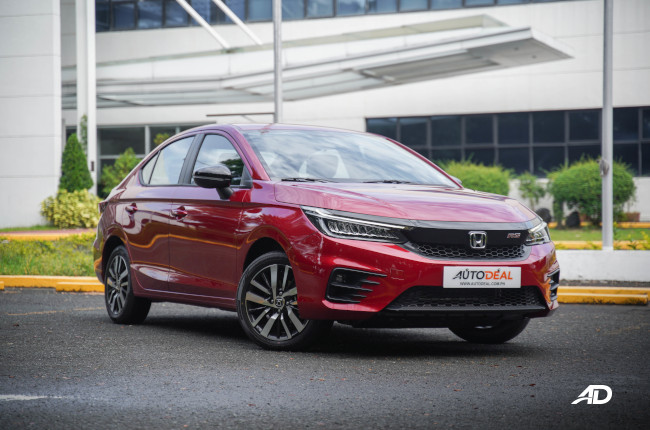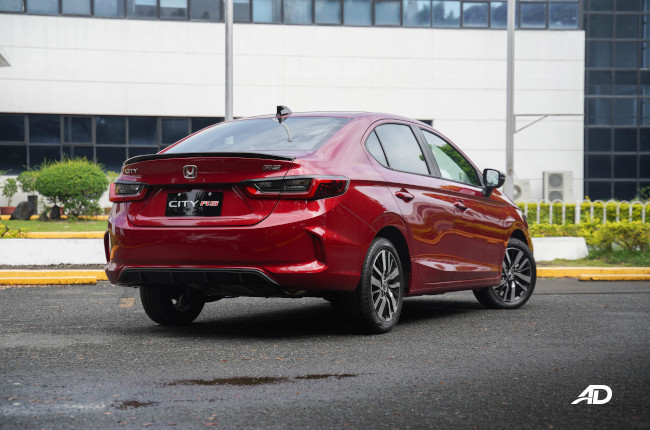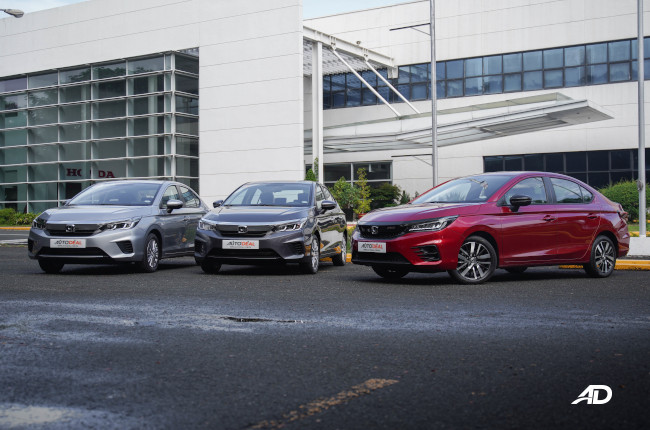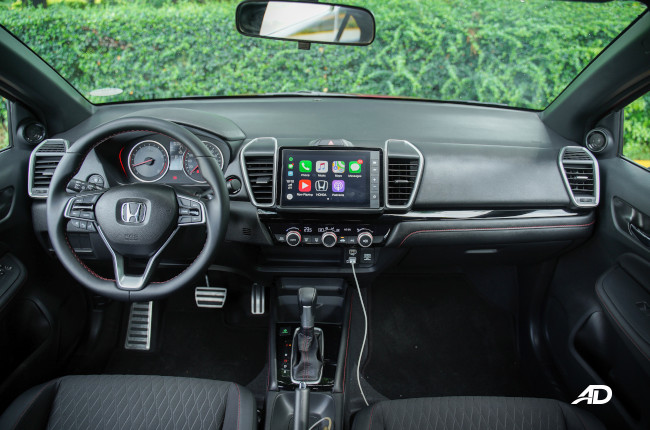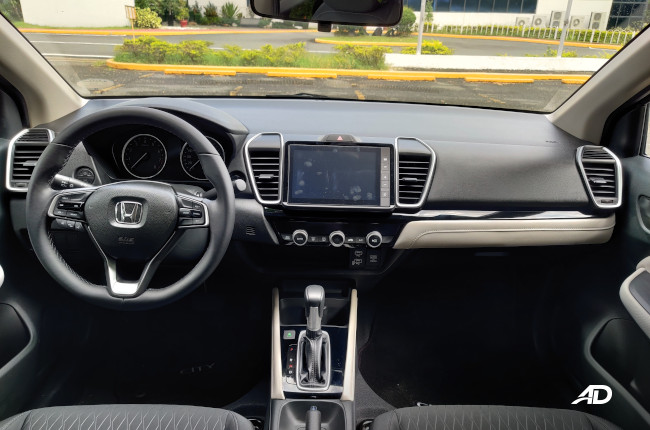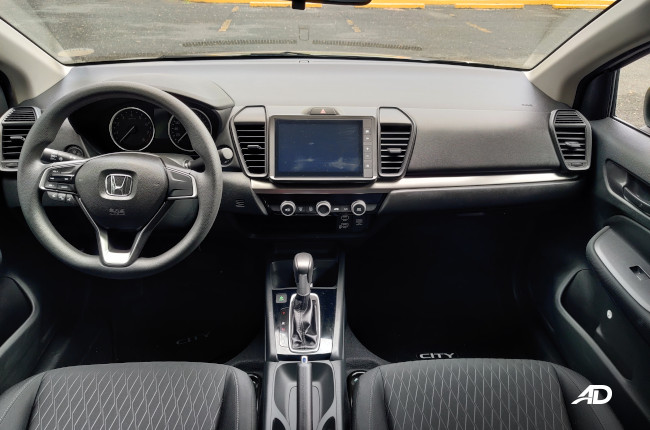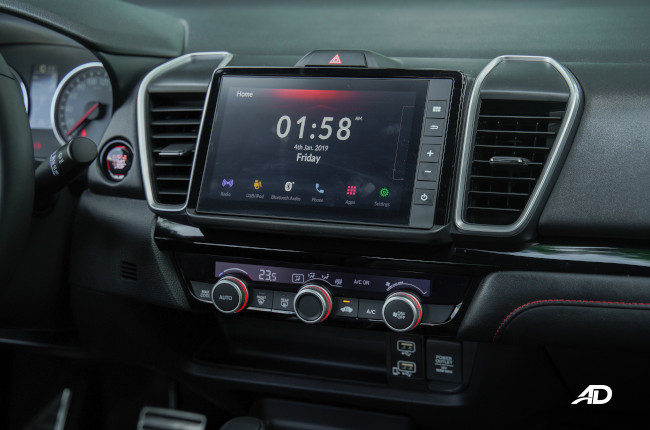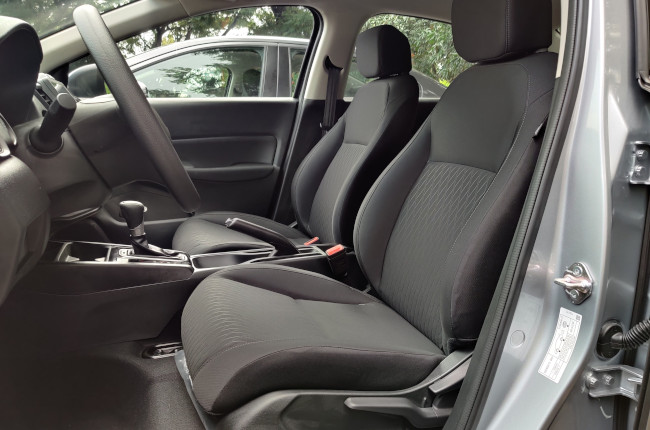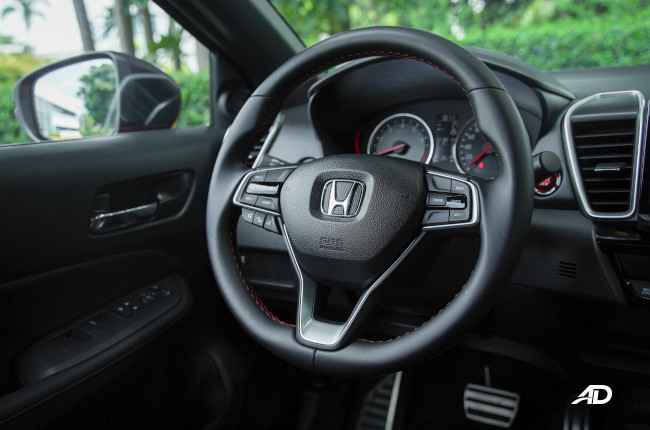
One of Honda Cars Philippines Inc.’s (HCPI) most popular models, the Honda City, gets a major update that is not just a facelift and a bit of a nip and tuck. In fact, the subcompact sedan got a refresh that could be as drastic as the 2009 model, lovingly referred to by Filipinos as the “transformer.”
Then it was more iterative moving forward with the wedge-shape being the norm for the nameplate, but now, we get a more elongated profile that is similar to the Honda Accord and the Honda Civic. We even get an RS variant to boot and add to the model’s roster.
Exterior and interior impressions
We’re used to seeing the Honda City in its top of the line VX+. For the longest time, the sedan had a more mature feel as it wasn’t as sporty-looking as the Jazz RS. Now, however, that is not the case as we see that the City gets a more aggressive front fascia with a lot of amenities to boot. Good on Honda that it is moving its high-end RS badge over to the City, but for consumers who want a more ‘executive’ or classy feel, the V variants still do well to cover that kind of consumer, especially with that light-tone interior.
Speaking of which, the interior of the new City is all-new and feels like a shrunken-down version of the Honda Accord. The dashboard punches above its weight in terms of price point, and the model has a lot of soft-touch materials found all throughout that make it a very good place to be in. Like what we said earlier, you get two distinct flavors with the City. Opting for the V variant gets you a warm and welcoming experience, while the RS is more sporty with its red accents and red stitching. It feels more ready to pounce than anything else. Plus, you finally get Apple CarPlay and Android Auto functionality with this model, so that’s a huge plus for buyers, and this feature extends to even the lower variants with a CVT, but that’s not even the kicker feature just yet. Equipped with upper trim levels, you get a 360-view camera system that is a first for the Honda City nameplate.
Safe to say that we are fans of the City. We feel that it is a step in the right direction catering to the market that wants a dressed-up and sporty sedan while still satiating the customers that still want a more sedate and mature look to their vehicle.
Driving Impressions

If you’ve piloted a Honda City before, it’s a similar experience but better. We were able to test the CVT variants of the car, and it is similar to the experience of the old model, except that the engine gets a slight bump in performance with the dual-overhead-cam (DOHC) valvetrain. The 1.5-liter engine is no longer a single-overhead-cam (SOHC) L15Z1, instead, it is the first time that the City will get a DOHC valvetrain, and its engine is now the L15B1. The top end is roughly the same, however, the midrange is beefier by just a slight bit. The torque delivery is also quite good even with the somewhat rubbery CVT that we’ve gotten used to with previous models. However, you can lock that transmission into a simulated gear ratio with the paddle shifters available in the RS variant for some acceptable engine braking force.

Handling for the City is still largely the same as its predecessor, albeit slightly tweaked. The suspension is more comfortable than before, but handling remains largely the same because Honda chose to retain the same MacPherson front and torsion beam rear suspension setup. You still get light steering thanks to the electronic power steering while the chassis remains rigid and put together even over a few bumps around the test track.
Verdict

Even if quite a few of us are familiar with the Honda City, this is a new model is a drastic departure from the prior incarnation of the subcompact sedan. The looks strike us as more mature, but then there is also an RS variant that makes the model look a lot younger and lean towards the sportier side of the spectrum. Buyers who love the City for its more mature looks can also get the V variant, which also strikes us as a very good choice.
It seems that Honda is back on the map for us, at least when it comes to the subcompact segment of sedans. The model is now set up to compete with the likes of the Toyota Vios for sedan supremacy in the Philipines. For the price that starts at just 838,000 for the manual S variant, you can be assured that you’re getting a great deal, while the top of the line RS variant might get a bit expensive compared to the base at P1,048,000, but the features add a lot of value to the model which we feel will be the new standard for top of the line automobiles for quite some time.
Colors
Latest Review
-
2025 BYD Seal 5 DM-i Premium Review / Review
We test-drove the BYD Seal 5 DM-i, and its features and affordable price make it a strong hybrid sedan contender.
4.2 / 5 -
Addictively excessive: The Ford Ranger Raptor Twin Turbo V6 / Review
The Ford Ranger Raptor Twin Turbo V6 is one crazy pickup truck. Wondering why? Just keep reading.
4.6 / 5 -
The Kia Carnival gives you more: More seats, more comfort, and more practicality / Review
The Kia Carnival is a three-row MPV designed for executives and families. It combines comfort, technology, and practicality, making it a strong choice for those looking for a premium people...
4.2 / 5
Popular Articles
-
Cheapest cars under P700,000 in the Philippines
Jerome Tresvalles · Sep 02, 2024
-
First car or next car, the Ford EcoSport is a tough package to beat
Jun 18, 2021
-
Car Maintenance checklist and guide – here’s everything you need to know
Earl Lee · Jan 12, 2021
-
Most fuel efficient family cars in the Philippines
Bryan Aaron Rivera · Nov 27, 2020
-
2021 Geely Okavango — Everything you need to know
Joey Deriquito · Nov 19, 2020
-
Family cars in the Philippines with the biggest trunks
Sep 20, 2023
-
Head to head: Toyota Rush vs. Suzuki XL7
Joey Deriquito · Oct 28, 2020
-
Why oil changes are important for your car
Earl Lee · Nov 10, 2020
-
2021 Kia Stonic — What you need to know about it
Joey Deriquito · Oct 16, 2020
-
Top 7 tips for buying a used car in the Philippines
Joey Deriquito · Nov 26, 2020


